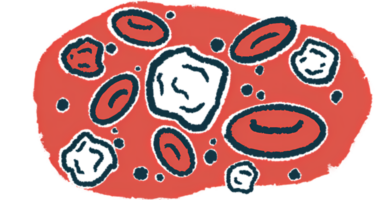Top 10 Multiple Sclerosis Articles of 2017

Multiple Sclerosis News Today brought you daily coverage of important discoveries, treatment developments, clinical trials, and other events dealing with multiple sclerosis throughout 2017.
We look forward to providing more news to MS patients, family members, and caregivers during 2018.
As a reminder of what mattered most to you in 2017, here are the 10 most read articles of last year.
No. 10 – PML Found in Ocrevus-Treated Patient Who Had Used Tysabri for 3 Previous Years
No reports of an MS patient developing a life-threatening brain disease known as progressive multifocal leukoencephalopathy surfaced during clinical trials of the now-approved therapy Ocrevus (ocrelizumab). But doctors reported the case of a person who developed the disease after being switched from Tysabri (natalizumab) to Ocrevus. Tysabri is known to increase the risk of the disease. Genentech, Ocrevus’ developer, did not exclude the possibility that the therapy gave rise to the disease, but no other cases were reported during 2017.
No. 9 – Ocrevus and the Hope of ‘Ending MS Forever’: Interview with MS Society’s Tim Coetzee
Although not a cure for multiple sclerosis, Ocrevus has raised hopes of a world free of the disease some day, Dr. Tim Coetzee said in an interview in March 2017. Coetzee, the National Multiple Sclerosis Society’s chief advocacy, services and research officer, also said the organization would be doing what it could to make Ocrevus available to as many MS patients as possible. While Ocrevus is the first therapy approved for primary progressive MS, it will likely help relapsing MS patients even more, Coetzee said.
No. 8 – Ocrevus Seen in Phase 3 Trials to Benefit Both Primary Progressive and Relapsing MS Patients
Genentech’s publication of the full results of Ocrevus’ Phase 3 clinical trials — ahead of its March 28 approval — attracted a lot of attention. The two studies showed that Ocrevus was far more effective than Rebif (interferon-beta 1a) at controlling relapsing MS. It also was effective in patients with primary progressive MS. The trials also showed that Ocrevus was safe.
One of the few articles on last year’s Top 10 list that did not deal with Ocrevus was an interview with Dr. Frédéric Sedel, the CEO of MedDay Pharmaceuticals. The company is developing a high-dose formulation of biotin, called MD1003, as a treatment for progressive MS. Sedel said MedDay hopes a Phase 3 clinical trial (NCT02936037) provides enough evidence of the compound’s effectiveness that regulators approve it. French regulators have already given some patients access to the drug under a special program.
No. 6 – Two Women with Different Forms of Multiple Sclerosis Call Ocrevus a Lifesaver
Two women with MS — one with the relapsing-remitting form of the disease and one with the primary progressive form — enrolled in Ocrevus trials and reaped the benefits of the treatment. While not all patients treated with Ocrevus benefited equally as well, Pamela Arterbridge of Columbus, Ohio, and Lorraine Lee of Austin, Texas, said it has dramatically improved their conditions — and their lives.
No. 5 – Are Ocrevus and Rituxan Similar? Neurologists Respond to Patients’ Concerns
The major share of the attention that Ocrevus received in 2017 stemmed from its effectiveness. But some allegations surfaced that its developer, Genentech, developed it just to maintain sales — because its patent on another MS drug, Rituxan (rituximab), was expiring. The critics contended that Ocrevus was basically a tweak of Rituxan. Genentech defended Ocrevus as a new therapy.
No. 4 – FDA Approves Ocrevus as 1st MS Treatment for Both Relapsing and Primary Progressive Forms
On March 28, 2017, the U.S. Food and Drug Administration approved Ocrevus as a treatment for both relapsing and primary progressive multiple sclerosis. The drug’s approval for primary progressive MS was historic because it was the first treatment for that form of the disease that the FDA had ever authorized.
No. 3 – Longevity Receives $316,000 Grant to See if Its Nerve-cell-protecting Therapy Will Work in MS
While Ocrevus is the first approved therapy that can slow the progression of primary progressive MS, patients are still hoping for a drug that can reverse the nerve damage they’ve experienced. In November 2017, Longevity Biotech said it had received a grant from the National MS Society to test its nerve-protecting and -repairing compound LBT-3627 in MS patients.
No. 2 – Common Allergy Treatment Restores Protective Neuron Coating in MS, Trial Suggests
The second most-read article of last year also dealt with nerve cell regeneration. A University of California, San Francisco study showed that a common over-the-counter allergy treatment, clemastine fumarate, can repaired damaged optic nerves. The findings suggested that a drug could be developed to repair the nerve damage in MS. Although clemastine fumarate itself can not reverse MS patients’ disability, the study gave researchers crucial insights into the properties needed in a drug that can regenerate nerve cells — inspiring hope that such a drug can eventually be developed.
No. 1 – What Every MS Patient Should Know About Ocrevus and Its Use
Given the huge interest in Ocrevus during 2017, it’s no surprise that last year’s most read article about MS was a guide to the treatment. The article described what Ocrevus is, how it is used, its pricing, and obtaining access to it. The article also discussed its safety. This included Ocreus-treated patients’ increased risk of developing cancer and their potential risk of developing a brain disease known as progressive multifocal leukoencephalopathy. For all those new to Ocrevus, the article remains a comprehensive guide to the treatment.
Multiple Sclerosis News Today hopes that these news, along with our continuing reporting throughout 2018, will ultimately contribute to educate, inform, and improve the lives of patients living with MS and their loved ones.
We wish all our readers a happy and inspiring 2018.






